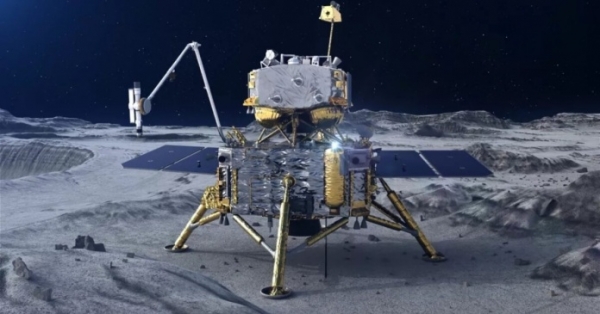
During the Cold War, the United States and the Soviet Union engaged in a fierce competition to achieve space supremacy. In this competition, the so-called the space race, the two countries strove to develop artificial satellites, send mammals or humans to the Moon, and launch probes into space. The Soviet Union led the early competition with the Luna program in which they launched uncrewed orbiters and landers into space and the Moon— particularly, Luna 3 took the first photographs of the backside of the Moon in 1959, and Luna 9 successfully landed on the Moon for the first time in history in 1966. The United States succeeded in landing the first human on the Moon in 1969 through the Apollo 11 mission. This mission is by far the first and last human landing on the Moon. To sum up, the space race has been a pioneer in space exploration and led to a remarkable development of humanity in just a few decades.
Interestingly, the new phase of the space race is taking place in the 2020s. Whereas the first space race was like a gunless war between two superpowers in order to show off technological superiority and prowess, the current race is more focused carrying out research and investigation of the Moon. Also, more countries are involved in this race including Japan, China, and India. So, what is so special about the Moon?
First, there are many rare and valuable resources such as Helium-3 and rare-earth elements (REE). In the current world where renewable energy and eco-friendly fuel are so significant, Helium-3 is a dream fuel that generates 40 tons of energy from just 1g of fusion while not emitting any radioactive materials. REE are essential materials for semiconductors and therefore most electronic devices, yet they are very limited on the Earth. According to Lee Sang-ryul, the president of Korea Aerospace Research Institute (KARI), it is estimated that there are approximately 1.1 million tons of Helium-3 and REE on the Moon.
Second, the more the Moon is explored, the more information about the early Earth may be revealed. This is because the Moon has a thin, vacuum-like atmosphere, so it preserves what existed 4.6 billion years ago. Thus, the secrets behind the formation of the Earth may be hinted at.
Finally, most countries are looking forward to setting up a lunar base as a long-term goal. The Moon is relatively closer to the Earth compared to other planets in the solar system, so it is important to settle on the Moon and confirm human survivability on it before moving to farther space. Also, now that the presence of water on the Moon has been confirmed, the potential for survival on the Moon and its utility value has increased greatly, as water may be used for living and generating other useful fuels by breaking it down into hydrogen and oxygen.
Thus, many countries are eagerly carrying out missions to explore the Moon. The United States are working on the Artemis Program in conjunction with NASA, the EU, and 19 other nations since 2017, aiming for a human landing on the Moon by 2025 and setting up sustainable lunar base camps by 2028. If succeeded, this will be the first case since the Apollo 11 mission that humans land on the Moon. The mission goes through a series of Space Launch System (SLS) missions, each scheduled at different years, and the first mission took place on Aug. 29 by sending an uncrewed spacecraft Artemis I to the moon orbit. The first crewed flight (Artemis II) is scheduled for 2024, and more flights will take place afterward.
Japan and Russia are striving to verify their technology for landing spacecraft on the Moon. Japan is planning to launch a CubeSat-format satellite OMOTENASHI this year, and Russia plans to launch a lunar lander Luna 25 in late September. India is planning to launch the lander (also rover) Chandrayaan-3 in 2023 after the earlier version Chandrayaan-2 failed to land on the Moon. China is planning Chang’e 6 and 7, a sample return mission, to explore the Antarctic regions of the Moon in 2024.
South Korea has also joined the race. After the successful launch of the orbital launch vehicle Nuri in June, they also sent the lunar orbiter Danuri into space on Aug. 5. Following Danuri, a program to develop a lander based on the sites and environments explored by Danuri is projected by 2030.
John Guidi, the director of NASA’s Human Exploration and Operation Mission Directorate (HEOMD) explained, “Our challenge is escaping the Earth and expanding our existence to the farther solar system. That is why we hope to go to Mars as it is the most similar planet to the Earth in the solar system, and the starting point is the Moon.” Hopefully, humanity will take another big leap with space exploration, just like the previous space race has done.


